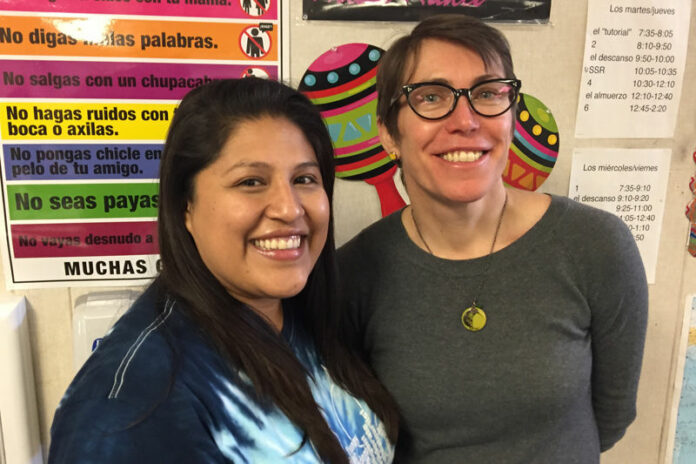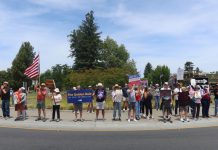
Starting this fall, Analy High School will offer a Spanish for Spanish Speakers class for the first time in its history.
Currently, students who are native Spanish speakers are placed into Spanish 2, but Spanish teacher Junie-Moon Curtiss has noticed for years that that isn’t a great fit because the students are far ahead of their peers in their conversational ability and they need both different kinds of grammatical help and more advanced materials.
Curtiss introduced the idea for the class at the last West Sonoma Union High School District (WSCUHSD) school board meeting, by saying, “I’ve been a teacher at Analy for 25 years and for at least 20 of them, I’ve been asking for a Spanish for Spanish Speakers class, so I’m so excited about this.”
WSCUHSD board president Jeanne Fernandes said that she initially wondered “‘Why do Spanish speakers need to take Spanish?’ It was explained to me that it’s no different than we, as English speakers, needing to take English in high school.”
The class, which will be offered to Spanish-speaking freshmen next fall, will be taught by teacher Noemi Reyes, a native Spanish speaker who graduated from Analy in 2010.
Reyes explained the need for the class this way:
“If someone speaks Spanish already, they learn a little bit differently,” she said. “They already know how to speak it, but they may need a little practice on grammar, like gender agreement, or writing and how to spell things.”
They’ll also get higher-level conversational and reading work than beginning Spanish learners.
“Some of the things we really want to bring in are the interesting poets and the interesting authors that we really just don’t have any way to give students right now until they get to Spanish 4,” Curtiss said.
Moon and Reyes also said that Spanish for Spanish Speakers will give Spanish-speaking students a chance to practice a more formal kind of Spanish than they may use at home or with their friends.
“This gives them a chance to use Spanish in a formal setting in front of the class,” Curtiss said. “It builds job skills, it builds academic skills — it’s the whole package really.”
The school plans to offer two levels of Spanish for Spanish Speakers, corresponding to Spanish 2 and Spanish 3. The classes are designed to develop the underlying academic skills that Spanish-speaking students need to thrive in Spanish 4, which is an honors class, usually taken in the senior year of high school.
Curtiss expects students will benefit both socially and psychologically from the class because it will allow them to write about their own personal experiences in the language they know best.
“They can use Spanish as a language to write their own autobiographies, and they can use it to really express themselves,” she said. “Because when you want to tell those stories about your past and your family, a lot of those stories happened in Spanish. In English class, they would be translating those childhood memories into English, whereas if they were able to do autobiography assignments in Spanish, they would be able to just use their own language, which is so rich.”
“Instead of thinking about Spanish as an unvalued language where you need to translate all those thoughts into English, why not make it a valued language,” Curtiss said. “You have this rich bilingual background, and now we’re going to celebrate it by having you writing poems or stories or doing presentations in that language.”
Reyes agrees that the class sends a broader social message.
“That’s where the identity piece comes in,” she said, “really getting to own the language and express themselves in more creative ways and being able to use their own native language to do that.”
Curtiss said she feels that Spanish for Spanish Speakers is just another step toward normalizing Spanish as a part of our shared culture.
“Shakira and J Lo just sang in Spanish at the Super Bowl halftime. I don’t think it gets more American than that,” she said. “We need to modernize our way of thinking about Spanish in the United States. It’s an American language.”








